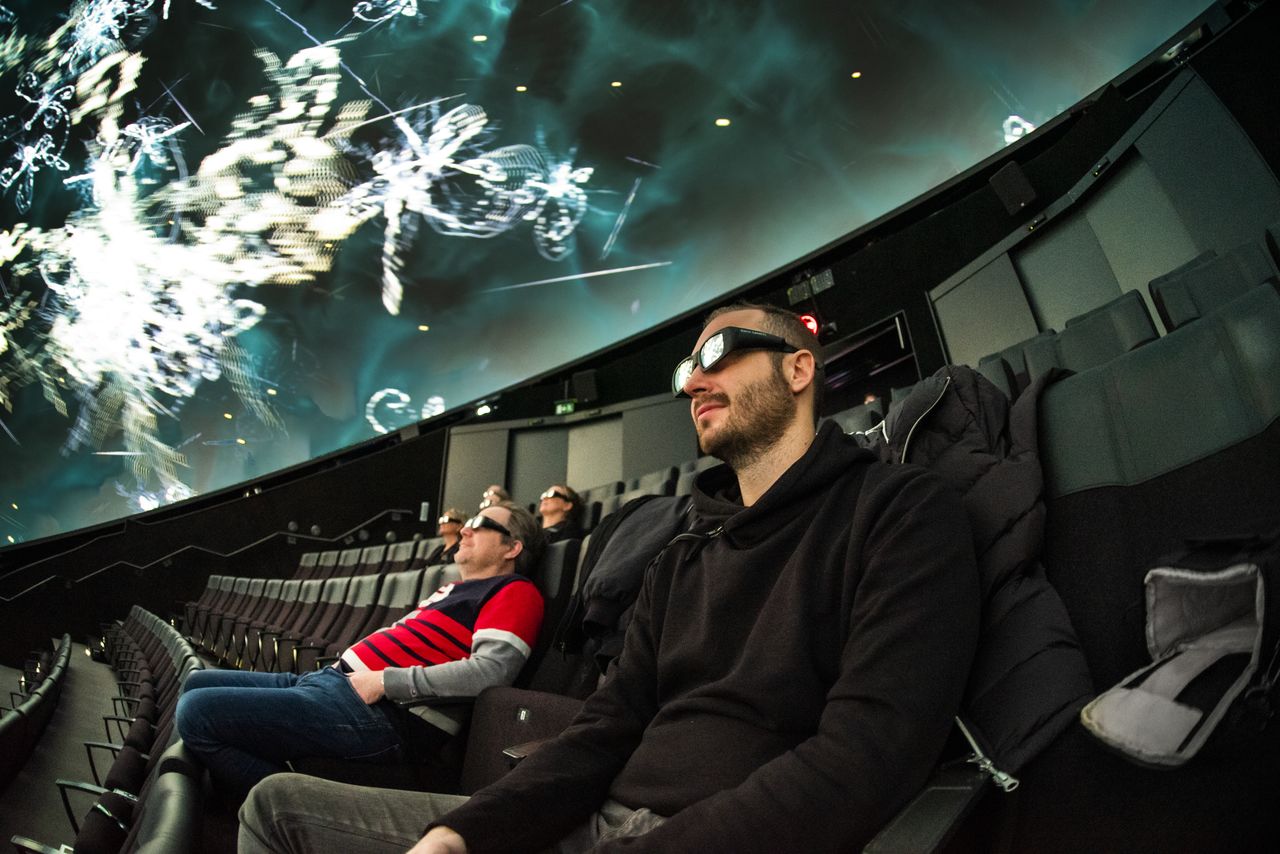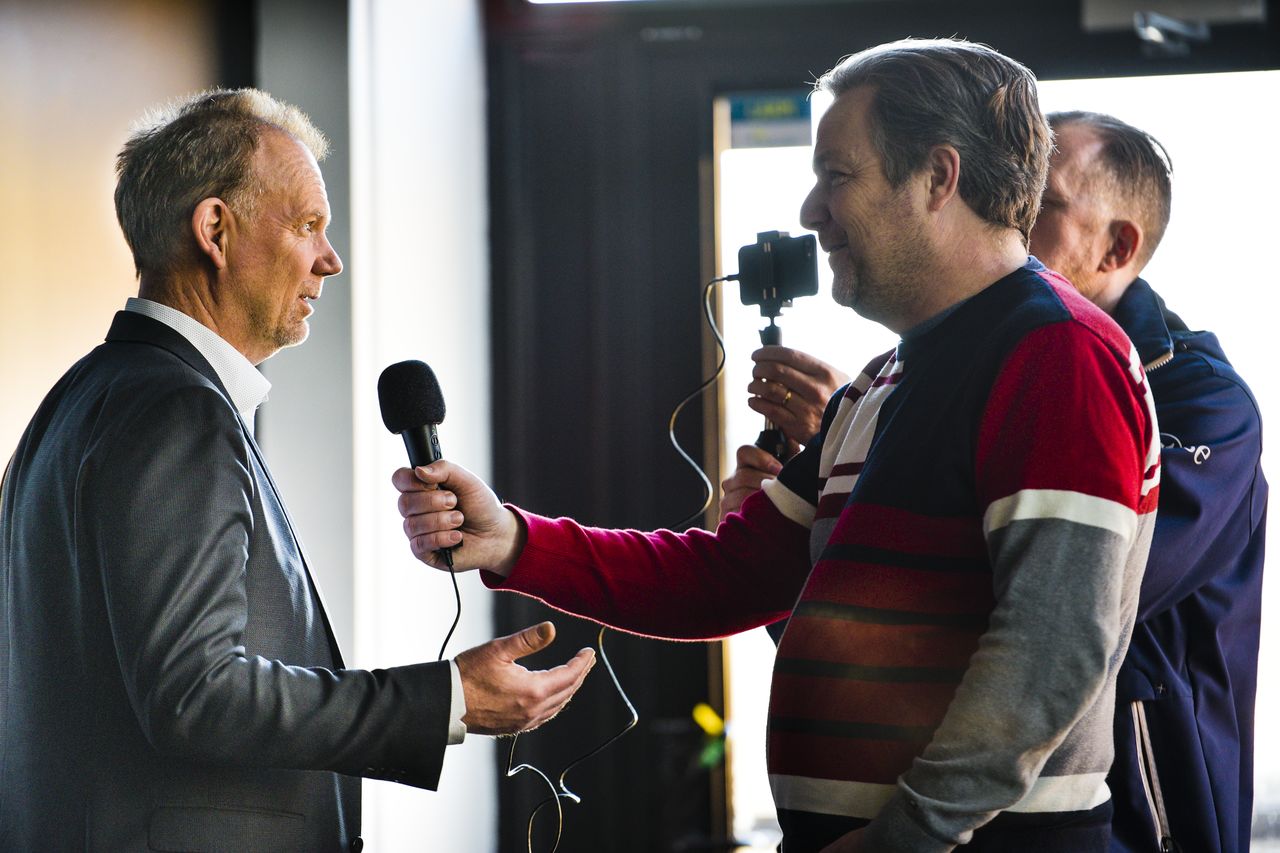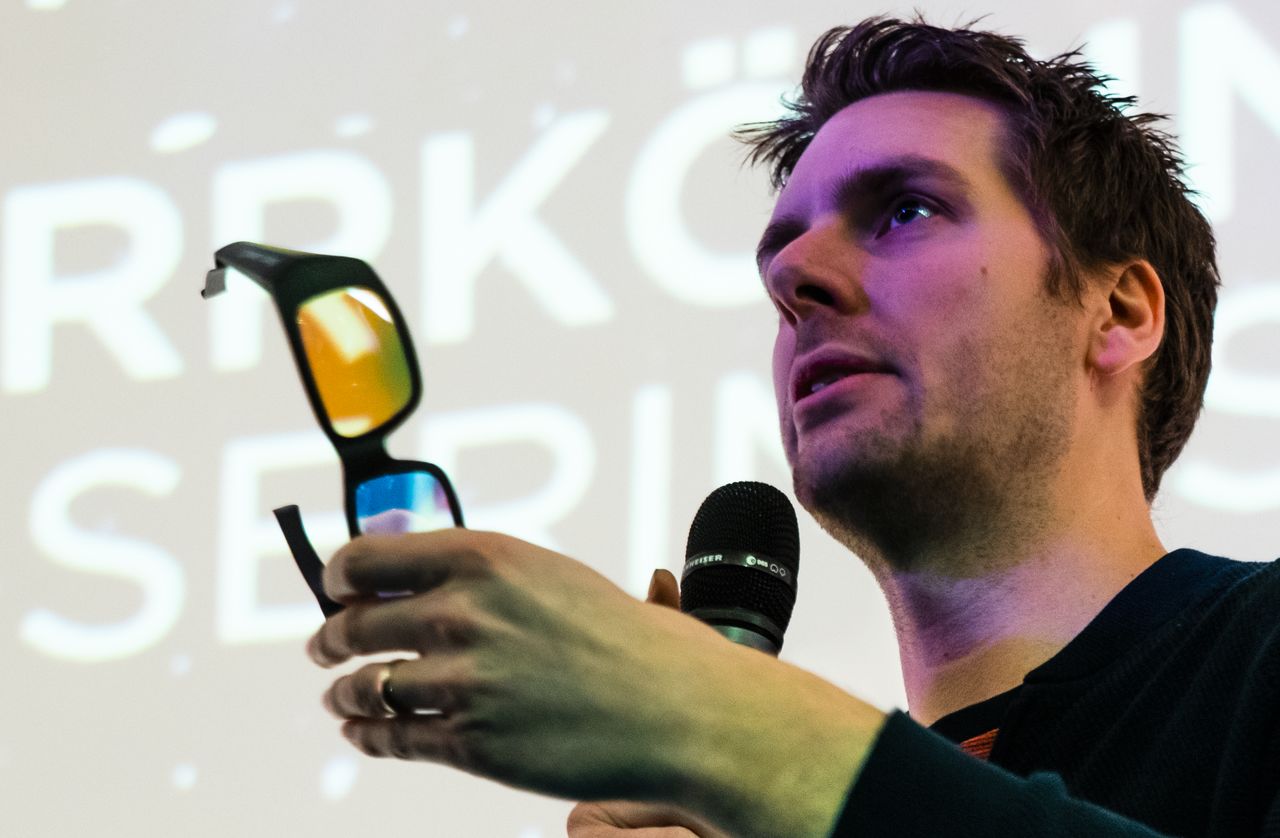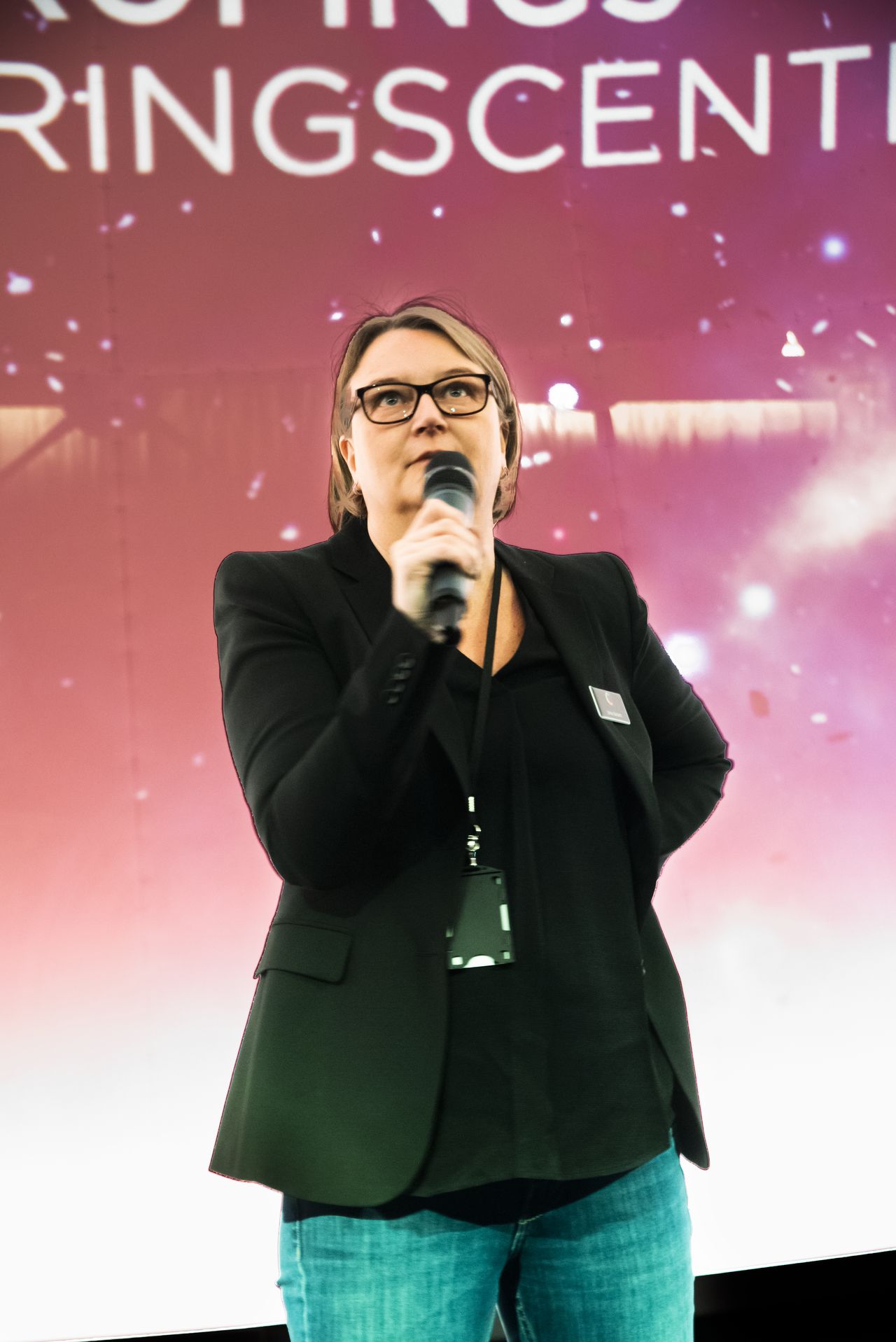 Foto Thor Balkhed
Foto Thor BalkhedProfessor Anders Ynnerman of the Division for Media and Information Technology at LiU, proudly guides the media on the first demonstration of what is probably the world’s best dome for 3D image quality.
 Foto Thor Balkhed
Foto Thor Balkhed“This is one part of an extremely long-term initiative to increase interest for science and technology among young people”, he says.
And Sofia Seifarth, managing director for det municipal company Norrköping Visualisering AB adds:
“This is an amazing benefit for us in Norrköping – to have the world’s most advanced dome and proximity to research.”
 Foto Thor Balkhed
Foto Thor BalkhedDome master and technical manager Erik Sundén, LiU, told the visitors that the six new projectors, each weighing 250 kilograms, have been adjusted to give millimetre precision on the domed screen above and around the audience.
Erik Sundén believes that Visualization Center C is, as it opens after the upgrade, the only dome in the world to use what are known as 6p lasers. “The projectors cost SEK 9 million each, and are more reliable than the ones they replace. Each has a cooling unit located at a distance, which eliminates noise and vibration where the visualisation takes place.”
 Foto Thor Balkhed
Foto Thor BalkhedThe new image has a resolution of 8K, which is close to the highest resolution that our eyes can process. The image can also contain more colours and shades, and has a larger dynamic range.
Since the images from the projectors overlap, special measures are needed to give an even and “seamless” overall image. In addition, the installation engineers must deal with two parallel images, since depth perception in the image comes from displacing the two by a small distance, which is how our eyes work in reality.
In order to display all visible colours, the primary colours red, green and blue (RGB) must be mixed. The projectors then transmit the colours in two versions, where each has its own frequency and is intended to be visualised by one eye. This gives a total of six channels per projector, from which the name ‘6p’ is derived.
Since the dome is using new light-projection technology, new spectacles are also needed. In the previous system, the right and left sides opened and closed alternately, to give the brain the impression of a fully formed image in three dimensions. This meant that half of the light intensity reached the audience. Now both sides are always open, but each transmits only the correct RGB-image to the correct eye.
It’s not easy to find films for this new advanced 3D technology. The choice of première showing fell on “We are stars”, describing 13.8 billion years of Earth history in 24 minutes.
The principal aims of the Norrköping Visualization Center C are to explain complex research for non-specialists, to spread knowledge about scientific and media technology, and to attract more people to become engineers, technology experts, programmers, etc.

Nearly everything in the heart of the dome, the room where the servers and audiovisual equipment are housed, has also been replaced. The equipment here can be used by researchers to test the Open Space software, used in space research. The project is led by Anders Ynnerman, and is being carried out together with the University of Utah, New York University, the American Museum of Natural History, and NASA.
The upgrade of the dome has cost approximately SEK 20 million, donated by the Knut and Alice Wallenberg Foundation through Wisdome, a Swedish nation-wide investment. The foundation has awarded an equal amount to each of four other science centres in Sweden, and a further SEK 50 million to make films. Wisdome is led by LiU and Visualization Center C in Norrköping, where the films will be produced.
Visualization Center C is a consortium that consists of Norrköping Visualisering AB, Cnema, C-Research Linköping University, Norrköping Science Park, and RISE Interactive C-Studio. Anders Ynnerman is director of the consortium.
Translated by George Farrants.
Länkar